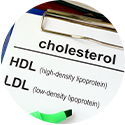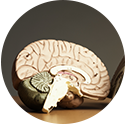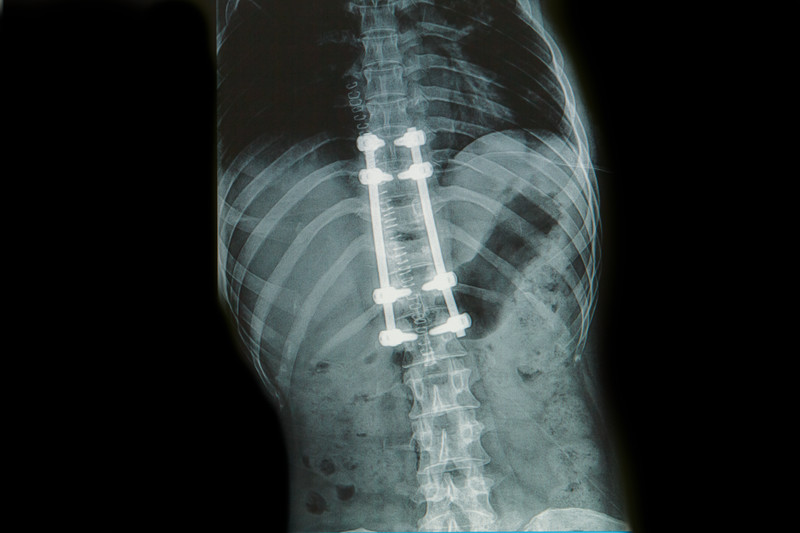Spinal surgery is not a simple procedure. Help in making the decision to have the spinal surgery or not is one of the main reasons people come to the Magaziner Center for Wellness. We also see patients following a failed spinal surgery procedure who are looking for answers, for some they are hoping for any answer. These are people with continued pain and possibly worse pain and function after the surgery. This article will not focus on what went wrong in the surgery, but rather, what are the treatment options for a patient after failed back surgery.
Treatment options for Failed Back Surgery Syndrome
In the medical journal Spine, (1) a team of surgeons wrote about treatment options for patients with Failed Back Surgery Syndrome. They explain that many treatment options offered to patients, including a revision or repair surgery are not viable options. Here is what they said:
A significant number of lumbar post-surgical patients continue to suffer persistent pain and limited function and are termed to have “Failed back surgery syndrome” (FBSS).
Treatments for FBSS may be generally categorized as physical therapy and exercise, medications, neuromodulation (Spinal Cord Simulators which we will discuss below) and re-operation.
FINDINGS: Evidence is weak for medications and re-operation, but strong for active exercise and interventional procedures such as adhesiolysis. Adhesiolysis is the surgical removal of scar tissue caused by the initial surgery. While evidence is strong in this report that this procedure provides benefit, other studies have reported more controversial findings (2) . This is a complex procedure where success outcomes are measured in 50% reduction in pain. In the end though 50% is better than 0% if it can be achieved.
The strongest evidence for long-term treatment is for spinal cord stimulation (SCS).
Controversy surrounding Failed Back Surgery Syndrome
In a July 2019 (3) position paper, spinal and neurosurgeons recognized the need to come up with a program to help people with Failed Back Surgery Syndrome because these people have been failed by the surgical medical community. Here is what they said: “A number of controversial issues concerning the management of Failed Back Surgery Syndrome are regularly debated, but no clear consensus has been reached. This pitfall is the result of lack of a standardized care pathway due to insufficient characterization of underlying pathophysiological mechanisms (disruptions in normal movement), which are essential to identify in order to offer appropriate treatment, and the paucity of evidence of treatment outcomes.: In other words – “no clear consensus,” and ” paucity of evidence of treatment outcomes.” There is no evidence anything works.
They paper continues in summary:
“Failed back surgery syndrome results from a cascade of medical and surgical events that have led to and left the patient with chronic back and radicular pain. This pain often remains refractory (difficult to treat) to sporadic (and usually not well-planned) management strategies for a considerable proportion of these patients. . . “
More back surgery or spinal cord stimulation?
While doctors now push for spinal cord simulators as an option to second surgery, recommendation to a revision spinal surgery are still being made in record numbers. This according to numerous studies. A spinal surgery is very complicated, a surgery to fixed a failed spinal surgery is even more complicated and is fraught with possibility of complication. A study in the Journal of medicine and life (4) with the title “Diagnosis and operatory treatment of the patients with failed back surgery caused by herniated disk relapse,” presented information to surgeons on what to look for to decide if this surgery will be successful.
The revision surgery needs a rigorous clinical-imagistic evaluation, which should also include the contrast MRI, which allows the differentiation between a disc hernia recurrence and the peridural fibrosis. (Is it a disc problem or a scar tissue problem? Below we will present our evidence that if it is disc problem, surgery may not be needed).
If you are having the second surgery the best results are usually seen within 12 months after the main surgery.In the study referenced at the onset of this article, in the medical journal Spine, surgeons warned “Evidence is weak for medications and re-operation.”
A study from John Hopkins and Yale – the spinal cord stimulation controversy
Spinal cord stimulation does help people. That is clear. But do they help everyone? Should everyone get one? Spinal cord simulators are implanted devices that send electric pulses to segments of the spine to mask pain signals before they reach the brain. However there is a controversy surrounding its use.
Researchers from Johns Hopkins University School of Medicine and Yale University School of Medicine combined their work to offer surgeons warning about being over-reliant on the ability of Spinal Cord Stimulation to help patients. The paper was published in The Yale journal of biology and medicine.(5)
“Chronic low back pain is a serious medical condition. Spine surgeries and Spinal Cord Stimulation (SCS) continue to grow as widespread treatment options for individuals who still present with pain symptoms following conservative medical care. However, spine surgery often leads to FBBS, which is then used as the justification for the implantation of spinal cord stimulator devices. Spine surgery has become a gateway to neurostimulation for chronic pain issues, which may benefit commercial interests over the interests of patients who are subjected to health and financial burdens. Given the possibility of biased efficacy studies due to physician-industry conflict of interests, it still remains unclear whether spine surgeries and/or SCS are beneficial to all patients.”
There is no commentary needed.
A May 2020 paper in the journal Pain Medicine (6) reiterated: There is insufficient evidence for the effectiveness of spinal cord stimulation for the treatment of axial low back pain with or without leg pain.
Our Treatment options
When someone comes into our office with failed back surgery complications, we have to assess the situation and offer the patient pragmatic and practical treatment options. Sometimes these treatment options will provide great relief, as in some instances where the failed surgery can be traced to a disc problem or to a damaging of the spinal ligaments or other soft-tissue connective structure. Sometimes the treatments will offer some help. Sometimes the case is so complicated that our treatments may not be able to offer any help. These are usually cases of extensive hardware failure. These expectations of treatment success are based on our many years of clinical experience applied to a detailed physical examination of the patient’s situation.
If we decide that we can help we may employ Prolotherapy injections, Platelet Rich Plasma Injections, and stem cell therapy.
Dr. Harold Wilkinson published his observation utilizing simple Prolotherapy injections to help patients with failed back surgery syndrome. In the journal Pain Physician, he wrote:
“Injection therapy (Prolotherapy) of painful enthesopathies (soft tissue attachments to the bone, i.e., ligaments and tendons) can provide significant relief of axial pain and tenderness combined with functional improvement, even in “failed back syndrome” patients. (7)
These are similar observations we have observed in our patients.
If you would like to explore more information, please contact our office so we can start a conversation with you.
Related Articles
Sacroiliac Joint Pain
Sacroiliac Joint Pain
Sacroiliac Joint Pain
References
1 Amirdelfan K, Webster L, Poree L, Sukul V, McRoberts P. Treatment options for failed back surgery syndrome patients with refractory chronic pain: an evidence based approach. Spine. 2017 Jul 15;42(1):S41-52.
2 Hossieni B, Dadkhah P, Moradi S, Hashemi SM, Safdari F. The Results of Treating Failed Back Surgery Syndrome by Adhesiolysis: Comparing the One-and Three-Day Protocols. Anesthesiology and pain medicine. 2017 Oct;7(5).
3 Gatzinsky K, Eldabe S, Deneuville JP, Duyvendak W, Naiditch N, Van Buyten JP, Rigoard P. Optimizing the Management and Outcomes of Failed Back Surgery Syndrome: A Proposal of a Standardized Multidisciplinary Team Care Pathway. Pain Res Manag. 2019 Jul 8;2019:8184592. doi: 10.1155/2019/8184592. PMID: 31360272; PMCID: PMC6644221.
4 Bodiu A. Diagnosis and operatory treatment of the patients with failed back surgery caused by herniated disk relapse. J Med Life. 2014 Oct-Dec;7(4):533-7.
5 Duy PQ, Anderson WS. Two Surgeries Do Not Always Make a Right: Spinal Cord Stimulation for Failed Back Surgery Syndrome. Yale J Biol Med. 2018;91(3):323-331. Published 2018 Sep 21.
6 Gatzinsky K, Eldabe S, Deneuville JP, et al. Optimizing the Management and Outcomes of Failed Back Surgery Syndrome: A Proposal of a Standardized Multidisciplinary Team Care Pathway. Pain Res Manag. 2019;2019:8184592. Published 2019 Jul 8. doi:10.1155/2019/8184592
7 Wilkinson HA. Injection therapy for enthesopathies causing axial spine pain and the “failed back syndrome”: a single blinded, randomized and cross-over study. Pain physician. 2005 Apr;8(2):167-73.





































Recent Comments